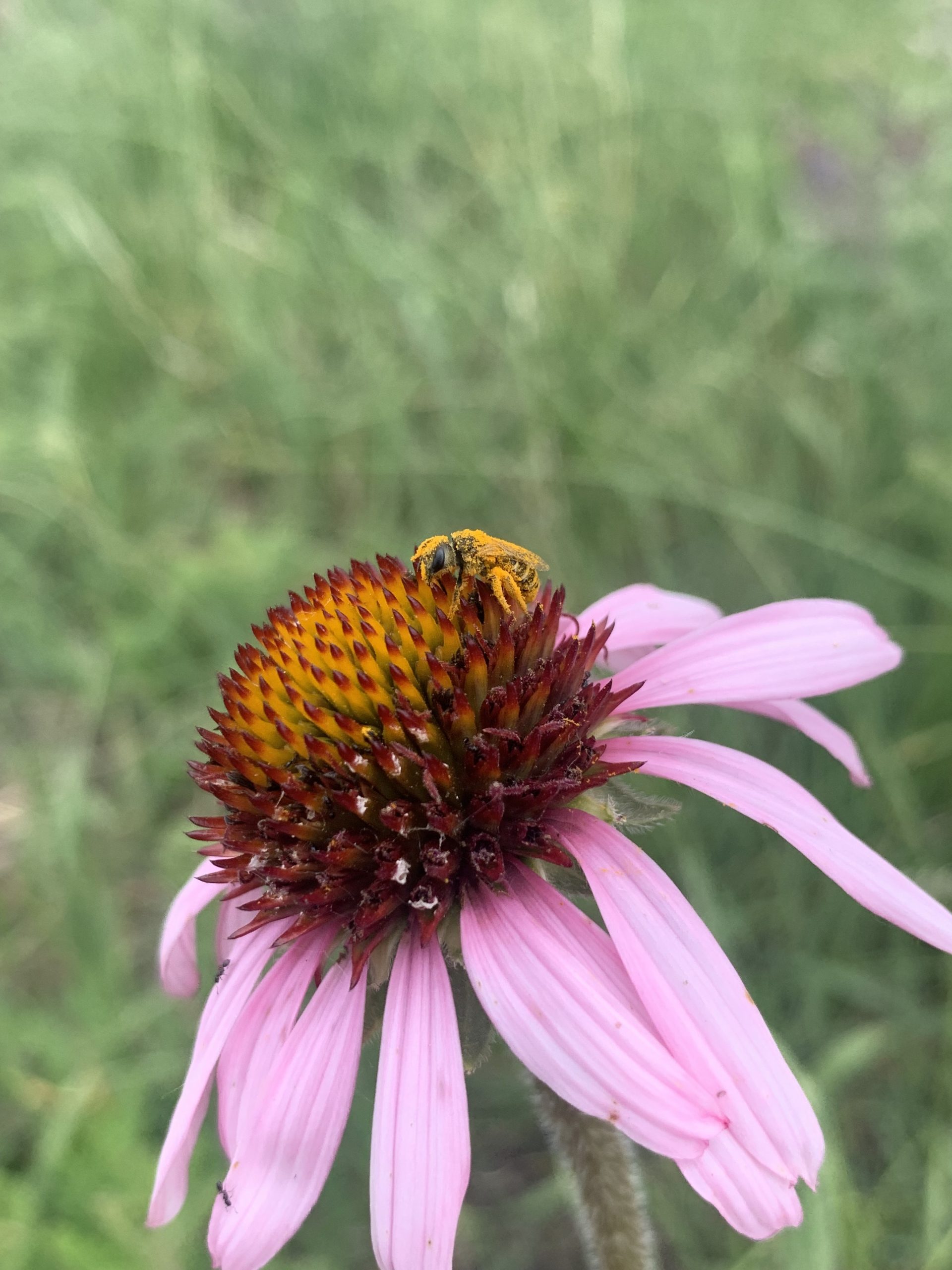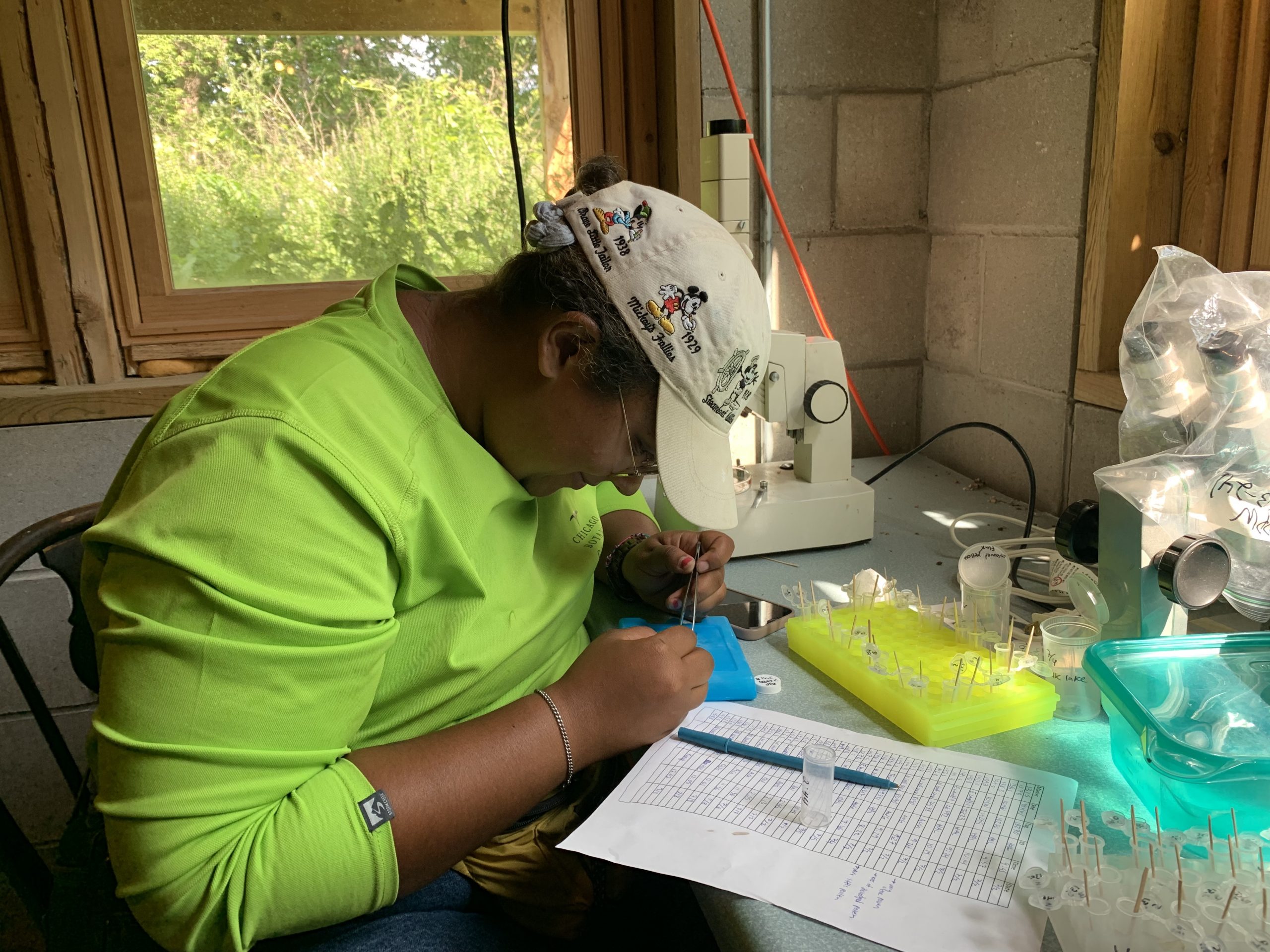This summer, Team Echinacea investigated whether there was a difference in pollinator fidelity in bees caught in eight burned remnant prairies and eighteen unburned remnant prairies. This experiment used the proportion of Echinacea angustifolia pollen carried by bees as they foraged on an E. angustifolia capitulum as a proxy for fidelity.
The 2021 bee collectors included the entirety of the team, and bees were collected between June 28th and July 20th. Upon visiting a remnant prairie, we attempted to capture at least three bees of the taxa Augochlorella aurata, Agapostemon virescens, and Halictus spp. We removed the pollen from the body and scopae separately and created microscope slides which were later used to identify the species carried by the bees based on morphology. After wiping them of their pollen, the bees were released back to the sites where they were caught.
- Start year: 2021
- Location: 26 remnant prairies
- Overlaps with: NA
- Data collected: Each bee was assigned a unique number from 101 to 192, and the scopae or body pollen was differentiated with either a B or an S (ex: 101S and 101B). The site, taxa, Echinacea tag number, date, and time of day were recorded for each bee caught. All heterospecific flower species in bloom at the site on the day it was visited for bee collection were noted on a spreadsheet.
- The data collected on the bees can be found here: https://www.dropbox.com/scl/fi/tuwkxqj2tau1ov33h7cgd/Dropbox-bee-data.xlsx?dl=0&rlkey=7wf2wxhy3w13qrt5xpk1pamsp
- The form containing the blooming heterospecific flower species can be found here: https://www.dropbox.com/scl/fi/k94j5vrhhj9m9xtjm69gl/Heterospecific-flowers.xlsx?dl=0&rlkey=drds57bfzj7c2wo9zcy1g2xh0
- Samples collected: 92 bees were caught and released and 89 were released back to the site where they were caught. 184 microscope slides were created with the pollen collected from the bees. These slides are being stored in Dr. Ison’s lab at the College of Wooster. A sample of each of the heterospecific flowers found at each was collected to create a pollen library. The slides created for the pollen library are also stored in Dr. Ison’s lab at the College of Wooster.
- Products: Report to be compiled this spring!



Leave a Reply